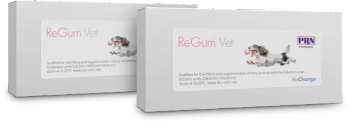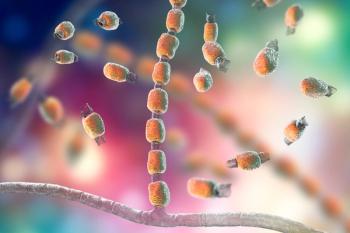
- dvm360 November 2022
- Volume 53
- Issue 11
- Pages: 22
Differentiating tooth fractures and exploring treatment options

A veterinary dentist demystifies this frequently diagnosed issue
Fractured teeth are one of the most common maladies seen in our veterinary patients. These injuries range from acute fractures that cause immediate discomfort and the need for rapid intervention to chronic issues that may be incidental findings. Differentiating between the types of fractures, treatment options, and chronicity is crucial for appropriate care.
Becoming familiar with the anatomy of tooth structure is an important foundation to understanding how to best treat our patients. The outermost structure of the tooth, the enamel, is an extremely hard inorganic layer that takes the brunt of normal chewing and trauma. Immediately central to that is dentin, the most prominent layer, which is slightly softer and more porous than enamel. These outer layers protect the core of the tooth, referred to as the pulp. This central structure is what provides vitality, support, and sensation to dentition. Exposure of the pulp to the oral environment will ultimately lead to tooth death.
Uncomplicated crown fractures, or enamel or enamel-dentin fractures, are frequently found in patients during routine examination. These fractures occur in the hard outer surfaces of teeth but do not directly invade the central vessel and nerve. Although the pulp is not exposed, the involvement of the porous dentin can lead to contamination by oral bacteria and ultimately infection. In more chronic cases, the exposed dentin may become smooth and discolored, which is often indicative of a reparative process in which the tooth is making disorganized layers of dentin to help clog the paths that lead to the pulp. Uncomplicated fractures can be painful in the acute phase and may lead to chronic sensitivity.
Enamel and enamel-dentin fractures should always be evaluated with a dental radiograph. Even if probing does not confirm pulp exposure, imaging of the tooth is always indicated to look for signs of infection. Dentinal tubules are like small highways via which bacteria can penetrate the tooth to cause endodontic disease and ultimately tooth death. If no apical disease is appreciated, smoothing of the fractured surface and placement of a bonding agent can help prevent bacterial invasion and provide comfort. Care must be taken when performing this procedure so as not to inadvertently expose the pulp chamber.
Complicated crown fractures cause exposure of the pulp and can be emergent in young animals. During examination, a central red dot or bleeding from the fracture is often seen. In pets younger than 18 months, vital pulp therapy may be considered to preserve the tooth. This time-sensitive procedure allows the tooth to stay functional and alive within the mouth. The best results are seen when performed immediately after fracture and no longer than 48 hours post trauma.
In pets older than 18 months or those with more chronic fractures, root canal therapy can be considered. This procedure allows the tooth to remain as a functional portion of the mouth by disinfecting the central pulp and replacing it with an inert material. Both vital pulp and root canal therapies have a high success rate but are contraindicated in patients who cannot undergo multiple anesthetic events for monitoring. Although not the preferred treatment option, a salvage procedure to extract the tooth is often preferable in cases of root involvement, active abscessation, or tooth resorption, or in patients who should not undergo follow-up anesthesia.
Kirk Herrmann, DVM (practice limited to dentistry and oral surgery), obtained his veterinary degree at the University of Florida in Gainesville. He continued his education with a rotating internship at the Veterinary Specialty Center of Delaware in New Castle, and a 3-year residency at the Center for Veterinary Dentistry and Oral Surgery in Gaithersburg, Maryland. Herrmann has a strong interest in providing healthy and functional mouths for pets through surgery, interceptive procedures, and client education.
Articles in this issue
almost 3 years ago
Snuggles in San Diegoalmost 3 years ago
Medical World News™: Fetch speaker sings medicinal musicalmost 3 years ago
Rabbit endotracheal intubation: Yes, you can do it (Part 1)almost 3 years ago
Obtain a cat’s consent for carealmost 3 years ago
4 ways to advance as a veterinary technician or assistantalmost 3 years ago
Psychotropic substances are poisoning petsalmost 3 years ago
The overprotective pet owneralmost 3 years ago
Why shock wave therapy can’t be imitated in patient carealmost 3 years ago
Busting oncology mythsalmost 3 years ago
How and when to start paying back student loansNewsletter
From exam room tips to practice management insights, get trusted veterinary news delivered straight to your inbox—subscribe to dvm360.






